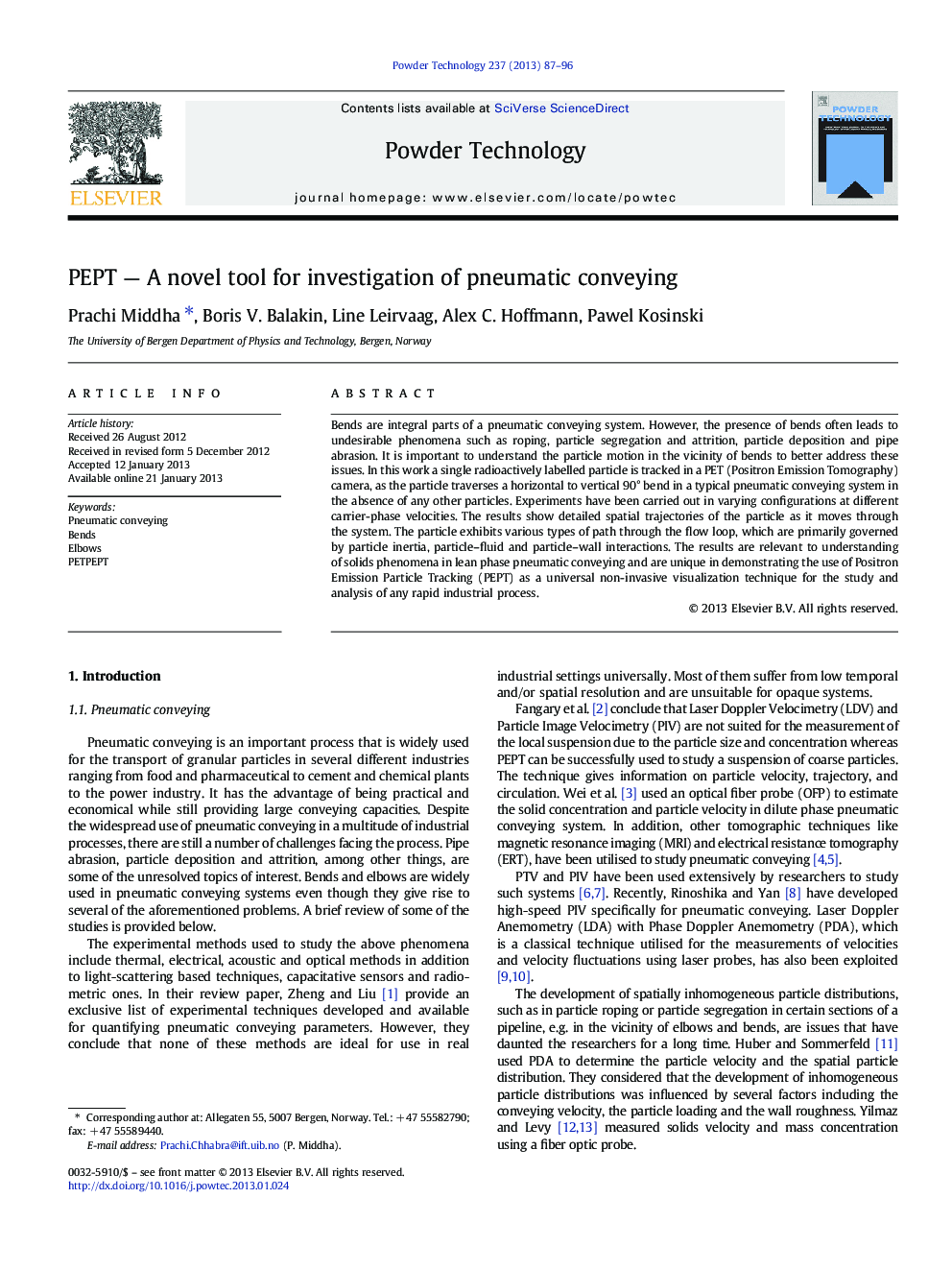| Article ID | Journal | Published Year | Pages | File Type |
|---|---|---|---|---|
| 236820 | Powder Technology | 2013 | 10 Pages |
Bends are integral parts of a pneumatic conveying system. However, the presence of bends often leads to undesirable phenomena such as roping, particle segregation and attrition, particle deposition and pipe abrasion. It is important to understand the particle motion in the vicinity of bends to better address these issues. In this work a single radioactively labelled particle is tracked in a PET (Positron Emission Tomography) camera, as the particle traverses a horizontal to vertical 90° bend in a typical pneumatic conveying system in the absence of any other particles. Experiments have been carried out in varying configurations at different carrier-phase velocities. The results show detailed spatial trajectories of the particle as it moves through the system. The particle exhibits various types of path through the flow loop, which are primarily governed by particle inertia, particle–fluid and particle–wall interactions. The results are relevant to understanding of solids phenomena in lean phase pneumatic conveying and are unique in demonstrating the use of Positron Emission Particle Tracking (PEPT) as a universal non-invasive visualization technique for the study and analysis of any rapid industrial process.
Graphical abstractParticle trajectories as seen in a PEPT set-up where the test section, within the camera field of view, consists of two 90 degree bends at the ends of a vertical straight tube section.Figure optionsDownload full-size imageDownload as PowerPoint slideHighlights► PEPT has been used to visualize a number of typical pneumatic conveying systems. ► Three types of trajectories were identified, present in all configurations. ► It has been demonstrated that PEPT is capable of visualizing very rapid processes.
